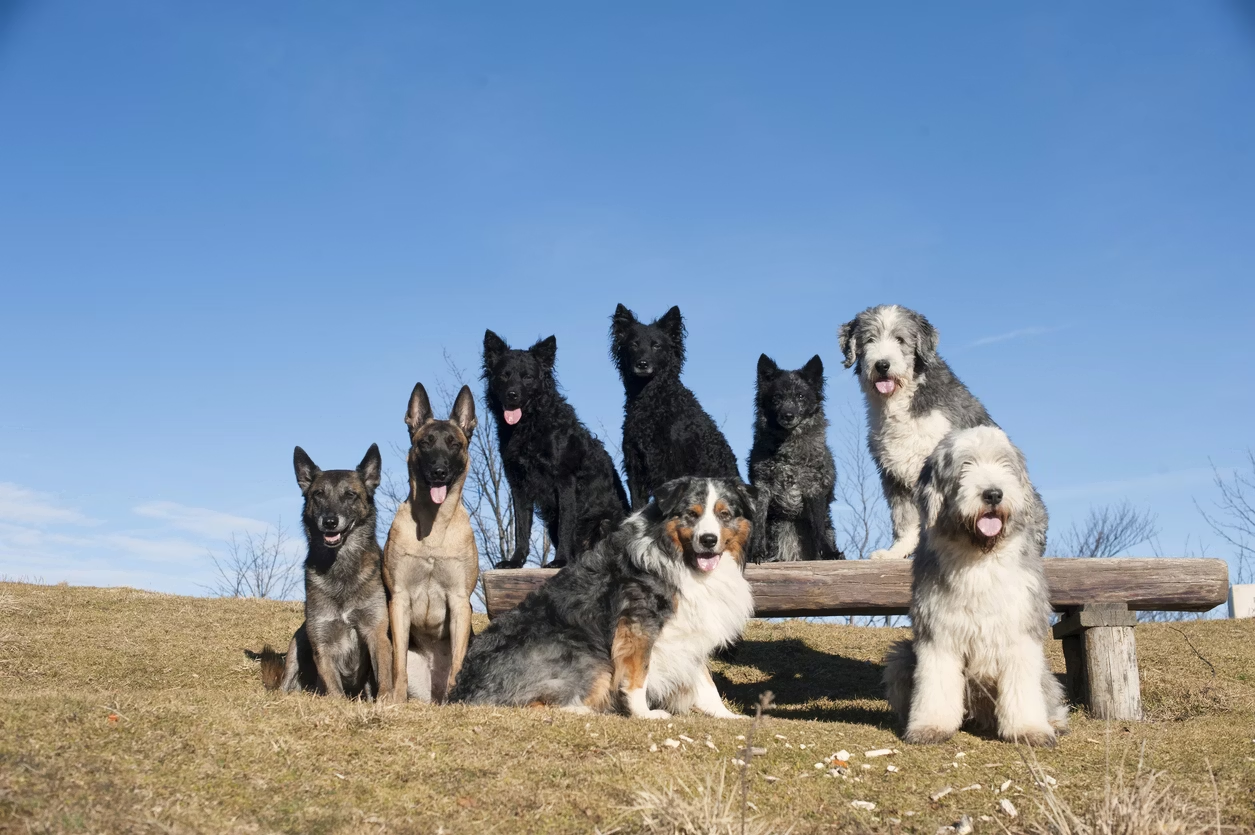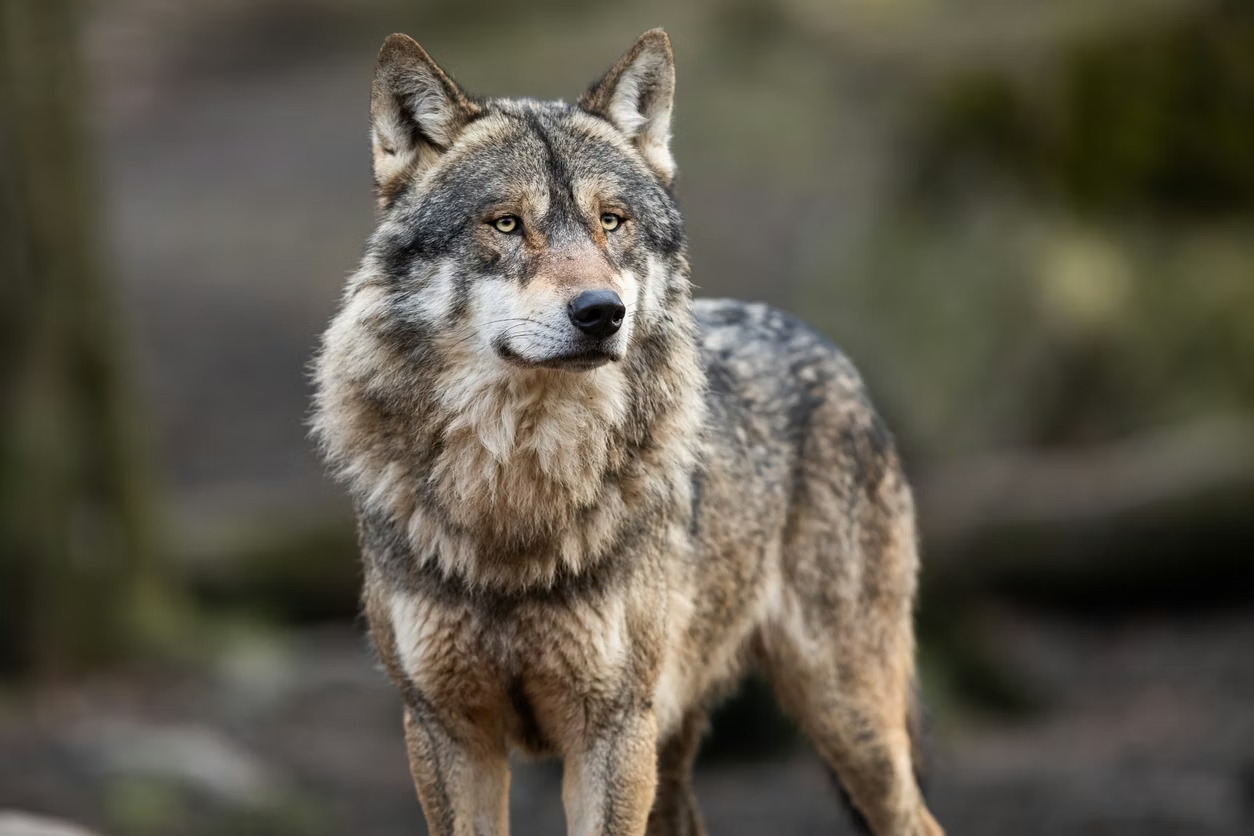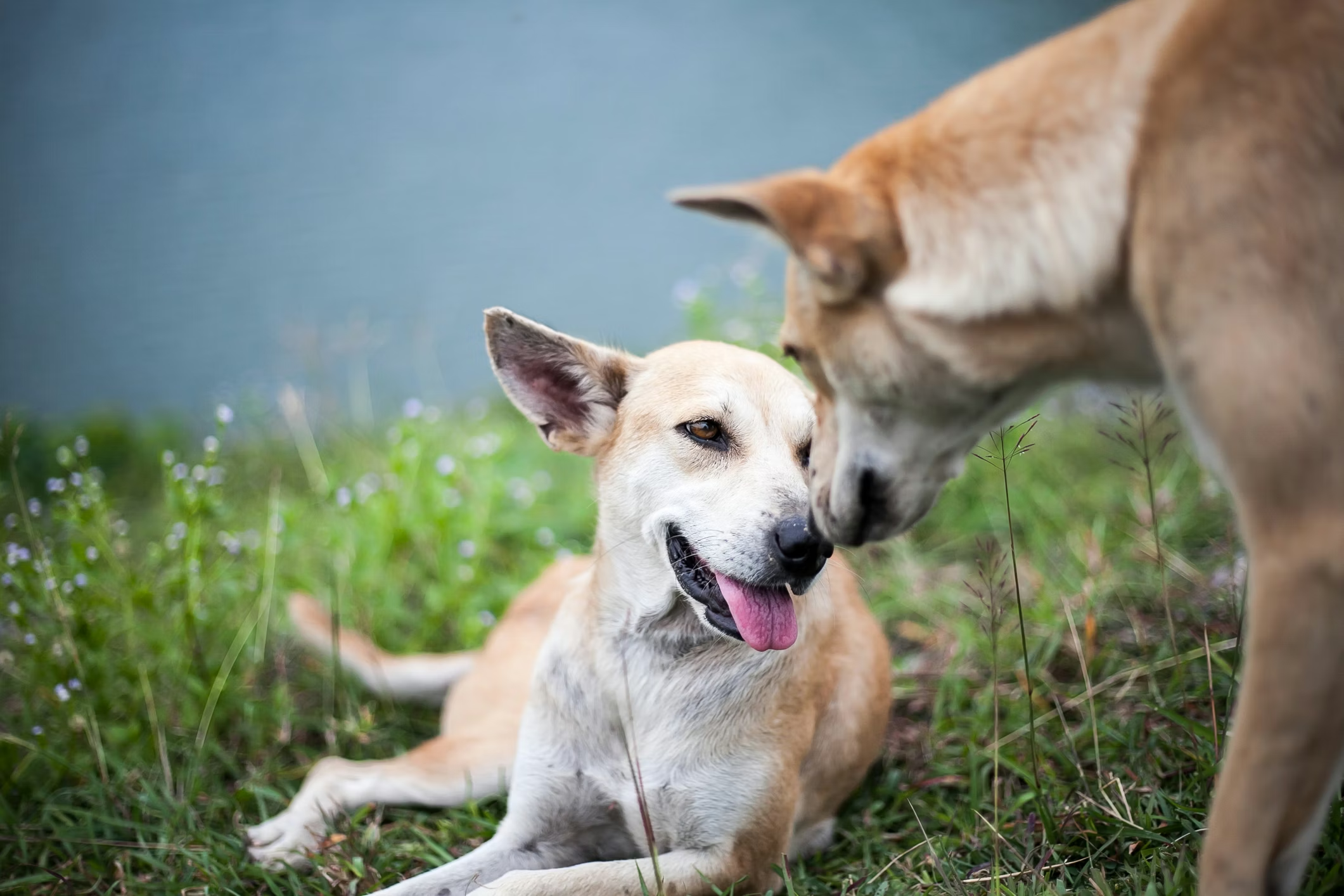Most people know that the lovable dogs we share our homes with today are descended from wolves. However, the exact time of domestication is debatable, even among experts. While some specifics remain a mystery, there are elements of how dogs diverged from wolves that we do understand. So, let’s take a look at how dogs became the cherished companions we know and love—and what characteristics they still share with their wild ancestors.
How dogs became domesticated
In simple terms, the domestication of animals represents a change in the relationship between animals and humans. During this process, wild animals are adapted or tamed to be more helpful to humans. These domesticated animals then rely on humans as their caretakers.
Estimates of when dog domestication began vary widely. Some researchers believe the earliest signs were present as far back as 140,000 years ago, while others place its origins 30,000-40,000 years ago. What scientists do agree on, however, is that modern-day dogs descended from an ancestor of the gray wolf.
So, how did wild wolves come to mingle with humans in the first place? Different theories have circulated, but many experts believe the co-existence began when humans were hunters and gatherers, and wolves started scavenging near human campsites. Over time, those wolves that were less fearful of people and more tolerant of their presence began to benefit from the food scraps and shelter provided by human settlements. For their part, wolves proved useful hunting partners thanks to their keen ability to track prey.
This mutually beneficial relationship eventually led to the selection of traits that favored tameness and reduced aggression, which increased their ability to coexist with humans. These changes led to the domestication of the primary dog species.
As humans began to appreciate the utility of their new canine companions, they started selectively breeding these early dogs to emphasize traits useful for specific tasks, such as hunting, guarding, and herding. This process further accelerated the divergence between dogs and wolves, leading to the vast diversity of dog breeds we see today.

Dog and wolf similarities
Despite thousands of years of separation, dogs and wolves share many similarities. Let’s explore a few of them.
Dog and wolf DNA
Dogs and wolves are genetically quite similar. In fact, the two species share 99.9% of their DNA. This high degree of genetic overlap means many of the wolf behaviors and traits we observe can also be found in dogs. For example, a keen sense of smell, prey drive, and scent marking are present in both species.
Additionally, both wolves and dogs have 39 pairs of chromosomes, which means they can mate and their offspring will be wolf-dog hybrids.
Social structure and behavior
Both dogs and wolves are highly social animals that live in groups. In the wild, wolves live in packs typically composed of a dominant breeding pair and their offspring. This pack structure is essential for the survival and success of the group, as it allows for cooperative hunting, pup rearing, and protection from predators.
Similarly, domestic dogs typically thrive in groups, though their "pack" may include people or other animals in addition to fellow dogs. Many of the social behaviors observed in dogs, such as pack mentality, dominance hierarchies, and cooperation, are inherited from their wolf ancestors.
Dogs and wolves also share similarities in how they communicate. Both species use a combination of vocalizations and body language to convey their emotions and intentions. Howling, growling, barking, and whining are all forms of vocal communication used by both dogs and wolves, although the frequency and context of these sounds may differ between the two species.
And that cute nesting behavior you may see in your pup—where they dig around in their blankets to make the perfect napping spot? They inherited that from wolves, who demonstrate similar behavior when clearing the ground of rocks or twigs to make a comfortable and safe den to rest.
Though not exhaustive, this list represents some prominent similarities between dogs and wolves. Now, let’s jump into what sets them apart!

Dog and wolf differences
While dogs and wolves have some things in common, domestication has led to significant differences between the two species.
Differences in physical appearance
Wolves generally have larger heads and feet, a narrower chest, longer legs, and a more pronounced muzzle than most dog breeds. They also have stronger jaws and teeth, which come in handy when hunting and killing prey. Additionally, wolves have less variation in their eye and coat colors.
By contrast, domestic dogs come in a wide variety of shapes and sizes, from the tiny Chihuahua to the massive Great Dane. This diversity in physical traits results from selective breeding by humans to emphasize specific characteristics, such as size, coat type, ear shape, and color.
And then there are those adorable "puppy dog eyes." Wolves don’t have the muscles around their eyes needed to create the heart-melting expression people have come to love in dogs. Scientists believe that during the domestication process, dogs developed these muscles to enhance their communication with people—and boy did it work!
Differences in nutritional needs
Wolves are carnivores whose digestive systems can more effectively process raw meat. On the other hand, dogs were introduced to starches in their diet when the humans they lived with began farming off the land. Thus, dogs have adapted their diet over thousands of years and are now considered omnivores.
Differences in breeding
Reproductive behavior is another area where dogs and wolves differ significantly. Wolves breed once a year, typically in late winter, with litters arriving in the spring. Dogs do not have a strict breeding season. Female dogs usually go into heat twice a year, and male dogs produce sperm year-round (once they become fertile at around six months).
Differences in intelligence
When it comes to dogs, intelligence is in the eye of the beholder. Many people measure a dog’s intelligence in terms of their trainability—which often comes down to their eagerness to please and ability to follow verbal commands. Using those qualities as a metric, dogs are "smarter" than wolves.
But when it comes to problem-solving, wolves have dogs beat. Wolves have shown the ability to solve puzzles at a younger age than dogs and to solve more complicated puzzles. And they are also more skilled at solving problems together—not surprising, considering their need to work as a pack to survive.
Final thoughts
The domestication of dogs is an excellent example of how evolution and human influence can shape the development of a species. While dogs and wolves share a common ancestry and many genetic and behavioral similarities, domestication has led to prominent differences between the two.
Understanding these similarities and differences gives pet parents insights into their canine companions’ nature. And with each new genetic discovery into your own dog, you can deepen your appreciation for what makes your pup unique.
Additional resources


















